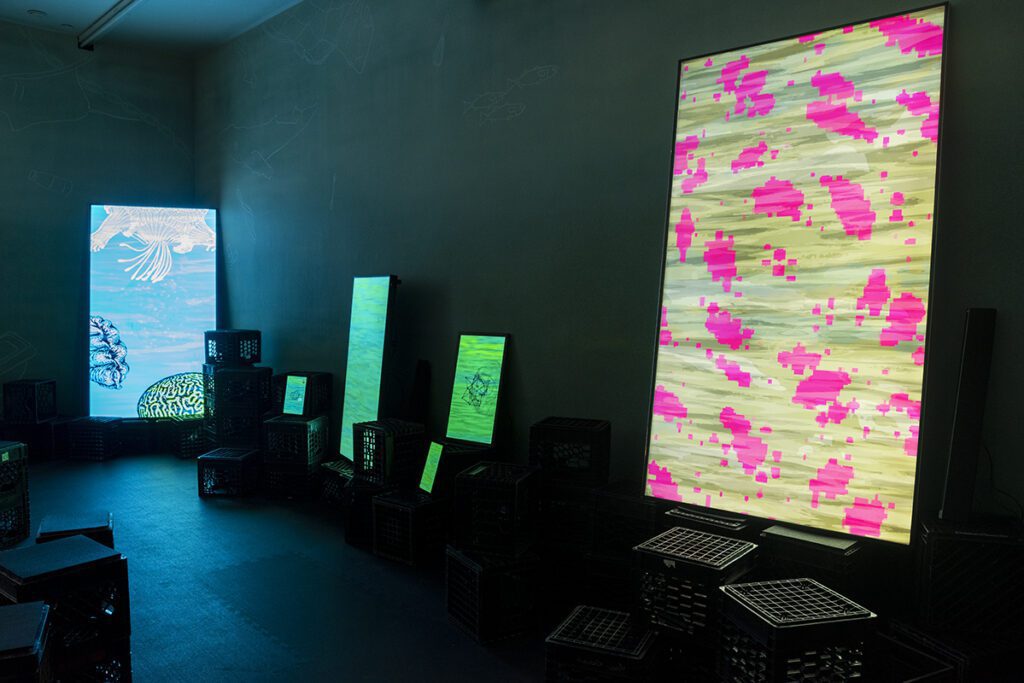
A set of three software-driven animation works that explore the ocean and its inhabitants as a fractal and restless repository of reflections and projections. The series offers an ocean poetics to produce new affections for the ocean at large—a cosmopolitan sea inclusive of graceful, filthy, tangled, and fantastic realities and imaginary churns. Custom software allows for an infinite recombination of sound, textures and characters within this repeating structure.
Oceans Like Us: Love Me is the imperative commanded by humans insistent that sea return their affection. This seductive, sensual, and fetishistic view of the ocean is expressed through the appearance of sinewy painterly kelp, dancing otters, jewel-like coral, sparkling mermaids and mermen, nervous squiggles and flurries of plankton, whales, dolphins, mantas, octopuses, fish, and… licking tongues. The nine-minute movements of this work are expressed as: Kelp, Plankton, and Coral.
In Oceans Like Us: Milkcrate Plastisphere a sea the color of nitrogen runoff hosts a sickly parade of ships, fishing nets, plastic waste, mutant fish, jellyfish, and human synchronized swimmers. Their choreography is uneasy, clogged, and chaotic. The nine-minute movements of this work are expressed as: Plastics, Net-works, and Diving Reflex.
Oceans Like Us: Bow Null is taken from the effect of large ships engines’ capacity to produce an acoustic shadow; one cannot hear the engine from the bow until the ship has passed. The ocean is a body to be measured, exacted, and extracted. Sensors, robot-operated exploratory vehicles, latex-gloved hands, sonar, signals, and mesh-like terrains dominate this sea. The nine-minute movements of this work are expressed as: Sunlight, Twilight, and Midnight.